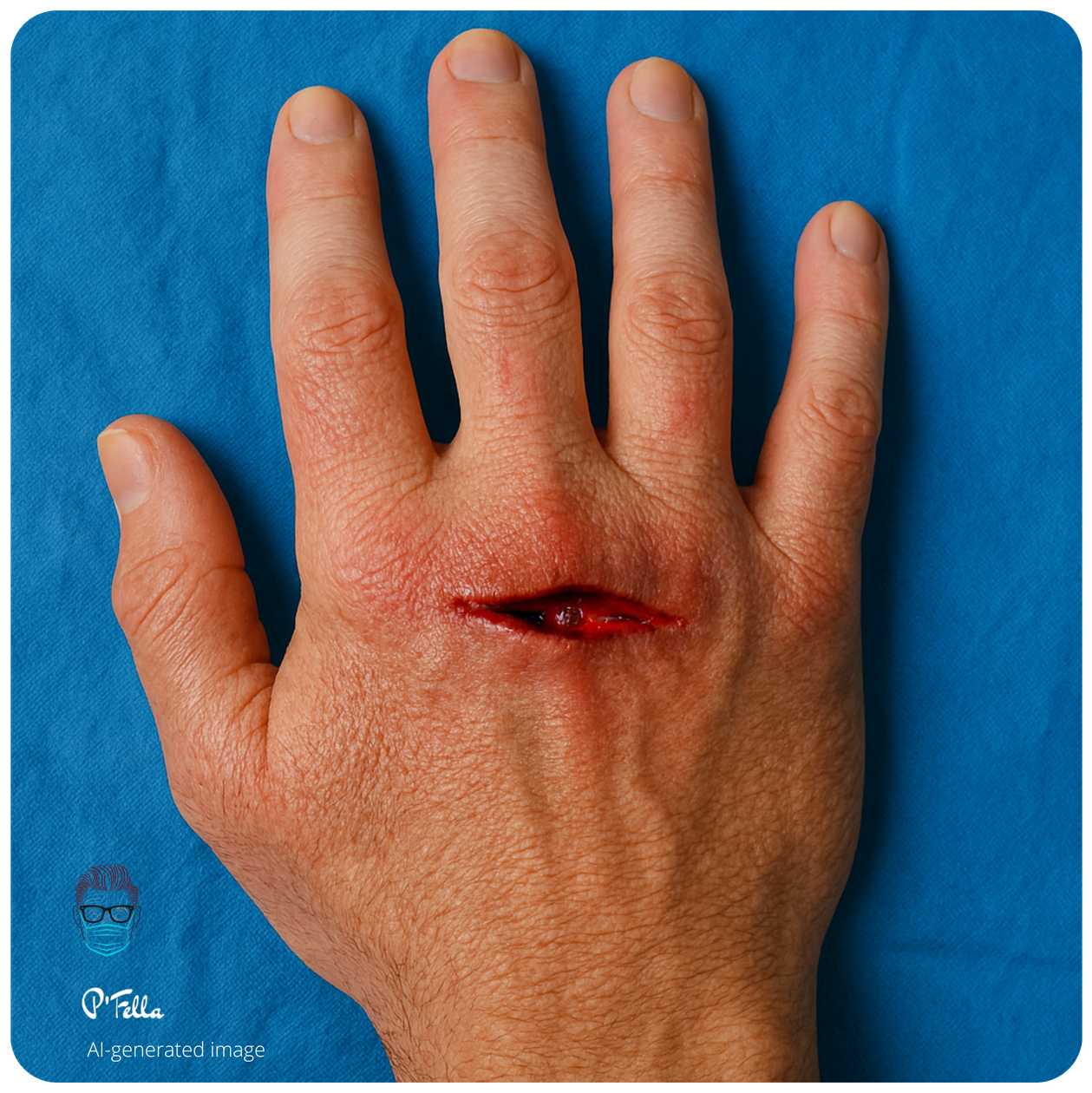In this week's edition
- ✍️ Letter from P'Fella
Trump’s tariffs are coming for your forehead lines! - 🤓 The Sunday Quiz
How well do you know extensor tendon injuries? - 🖼️ Image of the Week
Zone VI extensor tendon injury. - 🚑 Technique Tip
Kessler tendon repair in action. - 🎈 Upcoming Events
New event added! - 🎓 JPRAS Journal Club
Make your call on the next article! - 📖 What Does the Evidence Say
What's the best repair technique for extensor tendons? - 🔥 Articles of the Week
Managing open extensor tendon injuries, repair for partial extensor tendon lacerations, & post extensor tendon repair protocols: with 1-sentence summaries. - 💕 Feedback
Suggest ideas & give feedback!
A Letter from P'Fella
Trump’s Tariffs Are Coming for Your Forehead Lines!
Botox might be Irish, but it’s not immune to American politics.
President Trump’s latest tariff blitz could hit closer to the face than you'd think. A 10–26% hike on imports from Europe and Asia? That’s not just bad news for iPhones — it’s coming for your neuromodulators and fillers.
Yes, your Botox might soon cost more.
The Hidden Geography of Injectables
Let’s map it out.
- Botox: Made in Westport, Ireland (yep, population 5,000).
- Xeomin: Straight out of Germany.
- Jeuveau & Letybo: Born in South Korea.
- Sculptra & Restylane: Shipped from Sweden.
- U.S.-made options? Just a few: Daxxify (California), Radiesse (Wisconsin).
Bottom line? Injectables run on a global supply chain — and tariffs are about to poke that pipeline.
The Price Is Not Right (Yet)
“It becomes an issue if, because of tariffs, they increase my wholesale pricing, which means I have to charge patients more money.”
— Dr. Roy Kim, Plastic Surgeon, San Francisco (Allure)
So far, many injectables are protected by a pharmaceutical exemption — but that’s just policy, not law. If that changes, prices won’t just rise — they’ll spike. Fillers and other injectables classified as devices aren’t protected. Evolus has already flagged that its upcoming Evolysse range may take a tariff hit. That uncertainty? It’s already inflating forecasts.
The Real Takeaway
This isn’t just about Botox — it’s about a specialty built on global supply chains. When one country imposes a tariff, every aesthetic practice downstream feels it.
If exemptions tighten and prices rise, clinics may have to:
- Pass the cost to patients
- Absorb the margin loss
- Or finally give Daxxify the moment it’s been waiting for
But this isn’t just a pricing issue — it’s a reminder that our beauty economy is more global than we like to admit.
With Love (and tariffs),
P’Fella ❤️
The Sunday Quiz
How Well Do You Know Extensor Tendon Injuries?
Welcome to the next round of The Weekly Quiz.
Each edition of thePlasticsPaper includes a quiz question designed to challenge and engage our readers. Keep your wits about you and join in every week — the winner at the end of six rounds will earn you a one-year subscription to thePlasticsPro.
Image of the Week
Zone VI Extensor Tendon Injury
This week’s image illustrates a Zone VI extensor tendon injury. This AI-generated image depicts a laceration over the dorsum of the hand — a common site for open tendon injuries following sharp trauma.
Zone VI contains the extensor digitorum communis tendons and lies superficial to the dorsal interosseous muscles. Surgical repair in this zone often requires precise tendon reapproximation and careful handling of surrounding soft tissue.

Technique Tip
Kessler Tendon Repair in Action
This week’s tip highlights the Kessler repair, a core suture technique used in flexor and extensor tendon repair. It provides strong central fixation with minimal bulk, which is ideal for early mobilisation protocols.
The method uses a modified grasping loop configuration to reapproximate tendon ends under tension.
▶️ Watch the repair in action below.
Upcoming Events
New Event Added!
We've just added the 35th Annual Meeting of EURAPS to our calendar; sign up below👇
JPRAS Journal Club
Make Your Call on the Next Article
Two super insightful articles, one winner, and a full breakdown coming your way. Cast your vote below 👇
What Does the Evidence Say?
Optimal Techniques for Extensor Tendon Repair
The roll stitch technique showed superior outcomes compared to core sutures at the metacarpophalangeal joint level (Namazi et al., 2016). Four-strand repair techniques demonstrated better results than two-strand techniques (Abdella et al., 2019). The running interlocking horizontal mattress (RIHM) suture technique yielded superior results compared to the modified Kessler technique (Shaju et al., 2021).
Repair outcomes may vary based on the zone of injury, with zones 5-8 showing better final flexion than zones 1-4 (Dalton et al., 2023). Early controlled motion protocols can improve tendon gliding after repair (Abdella et al., 2019).
Articles of the Week
3 Interesting Articles with One-Sentence Summaries
Despite their superficial location, extensor tendon injuries demand precise zone-based management and adherence to evolving repair and rehabilitation strategies to optimise functional recovery.
Contrary to common practice, evidence suggests partial extensor tendon lacerations may heal just as well without surgical repair, raising questions about the necessity of routine intervention.
Early protected mobilization using relative motion splinting, combined with WALANT techniques is reshaping extensor tendon management, enabling functional recovery to begin as early as day 3 post-repair.


